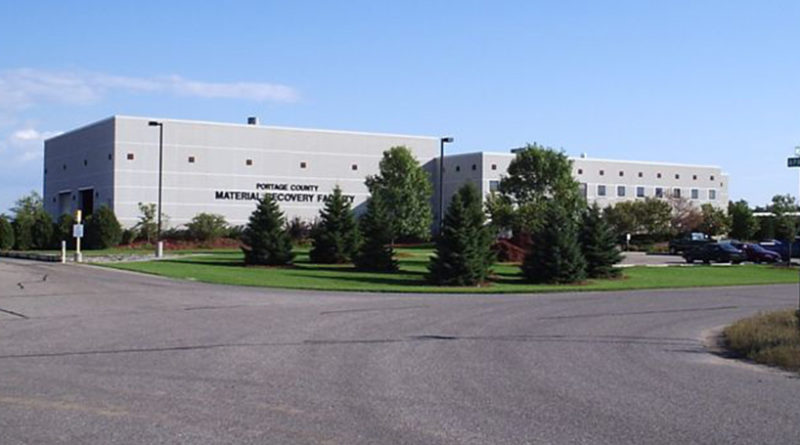COLUMN: Safely dispose of electronics, batteries
Editor’s note: This is the second in a two-part series. See Part One from June 19 here.
By Amanda Haffele
Proper Disposal is Important: Part Two
Putting electronics or rechargeable batteries in your recycling or trash containers is putting workers, the facilities they work at, or vehicles they drive, at risk.
It might be an extra step to bring these items somewhere for proper disposal, but it’s really important. Fires are on the rise in the solid waste and recycling industries, and many of them are caused by improperly disposed of electronics and batteries.
Electronics
According to the Wisconsin DNR and the Product Stewardship Institute, electronics waste or e-waste is one of the fastest-growing waste streams today. Because these items contain both very valuable and toxic materials Wisconsin is one of 24 states to ban electronics from landfills and incinerators.
Wisconsin’s Electronics Recycling Law was signed in October 2009. The law establishes requirements for manufacturers, recyclers, and collectors to ensure recycling is done in an environmentally sound manner and supports the E-Cycle Wisconsin program.
Proper recycling of electronics is expensive so if you’re not paying to dispose of electronics, especially televisions or computers, there is a good chance it’s not being done in an environmentally safe way or in a manner that protects human health.
Certified electronic recyclers must follow stringent health and environmental guidelines to ensure their employees’ and the environment’s safety. The best electronic recyclers maintain multiple certifications such as ISO 14001, ISO 45001, R2 or Responsible Recycling, or e-Stewards.
So why are some electronics so expensive to recycle? Old televisions and monitors house a cathode ray tube or CRT. CRTs contain leaded glass among many other hazardous materials. Many precautions have to be taken to ensure the health of workers and the environment when removing CRTs from the other components. And because there isn’t a single glass-to-glass recycler of leaded glass it’s extremely expensive to properly manage and dispose of. There are a few small specialty markets that use glass.
However, most electronic recyclers have to process the glass as hazardous waste. LCD televisions contain a small amount of hard-to-remove liquid mercury, and LED televisions don’t contain a lot of intrinsically valuable components to help offset labor and recycling costs. LED and LCD televisions are hard to tell apart as well, so many collectors or recyclers group them together and charge one price.
A growing—and costly—electronic stream is electronics that are manufactured with internal or embedded batteries (think drones, Fitbits, and vape pens). Generally, these devices are lightweight and continue to get lighter, yet are complex and time-consuming to safely and properly take apart. With little to no intrinsic value, the consumer must pay a higher price to offset their disposal.
Residents may properly recycle electronics with Portage County Solid Waste. We are a certified E-Cycle Wisconsin Collector that recycles with a certified recycler. Other E-cycle Wisconsin Collectors include Express Recycling in Stevens Point and Best Buy in Plover. These places have restrictions and fees so it’s best to call in advance.
Batteries
Batteries power so much of our day—how many items can you think of in just a few seconds? Besides your cell phone or laptop did you think of a car, carver, flashlight, hand mixer, hair clipper, hearing aid, lamp, lawn mower, power tool, razor, speaker, toothbrush, watch, or weed whip? Whew! Batteries are convenient, however, if not disposed of properly or properly taken care of they can have disastrous effects.
Never let opposite ends touch. Store unused batteries in their original container and tape their ends before disposal. Taping them ensures no power left over can be released if two opposite terminals touch. Even “dead” rechargeable batteries can still hold up to 30 percent power.
The easiest way to tape button batteries is to lay a piece of clear packaging tape, sticky side up, on a flat surface. Lay batteries flat on the tape and then place another piece of clear tape on the top. Now they’re ready for proper disposal. Using clear tape allows the recycler to easily figure out what the chemistry is for proper recycling.
When disposing of batteries there is only one type of battery—alkaline—that can be safely thrown into the trash. All others should be recycled at a drop-off facility. Not all single-use batteries are alkaline, so if you can’t read or find the word “alkaline” assume it’s of another chemistry. Bring any type of unwanted batteries to the Portage County Transfer Facility in Plover or Bulbs & Batteries in Stevens Point, both businesses charge a small fee. Lowes in Plover accepts rechargeable batteries only.
Swollen batteries are like little pressure-cooker bombs just waiting to go off and cause a fire. These batteries are generally lithium-ion in chemistry. The best thing to do if you find a swollen battery is to place the battery or entire device, unless you can safely and carefully remove the battery, into a metal container.
Ideally, place kitty litter, Oil-Dri, or sand over the top and then store it in a safe place until you can bring it to the Portage County Transfer Facility for proper disposal. We’ll take it from there. Did you know it takes a special Class D fire extinguisher to extinguish a lithium-ion fire and that most extinguishers are Class ABC? It’s like trying to put out a grease fire with water.
Proper disposal is important so please reach out if you have any questions or would like to learn more. Contact us at (715) 343-6297 or [email protected].
Amanda Haffele is the Portage County Solid Waste Director. She works at the Material Recovery Facility, 600 Moore Rd., Plover, and can be reached at 715.343.6297 or [email protected].




